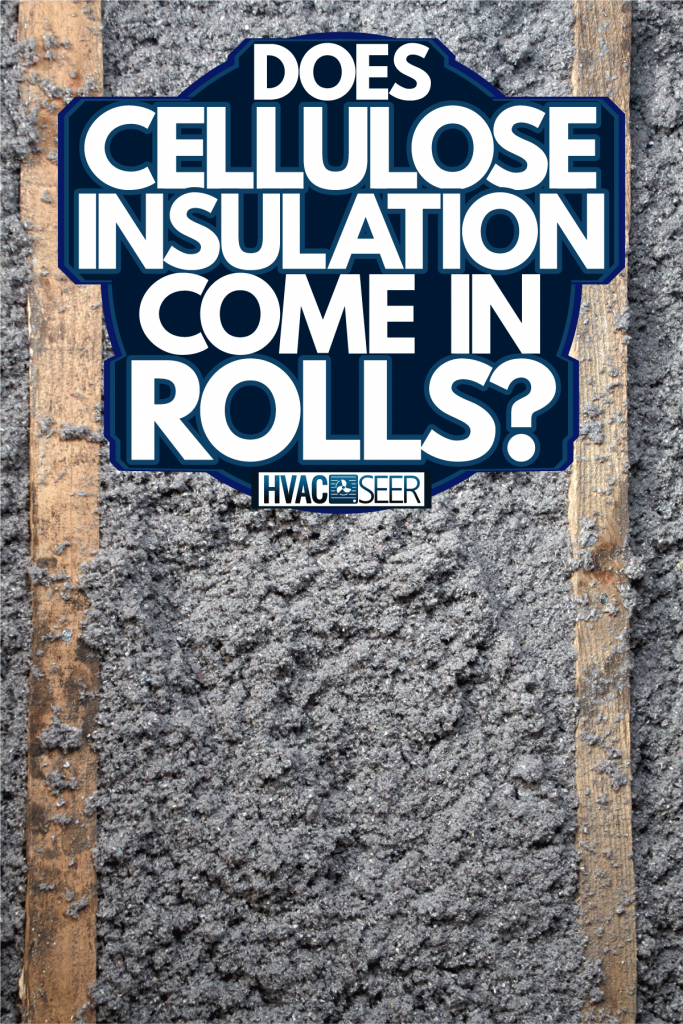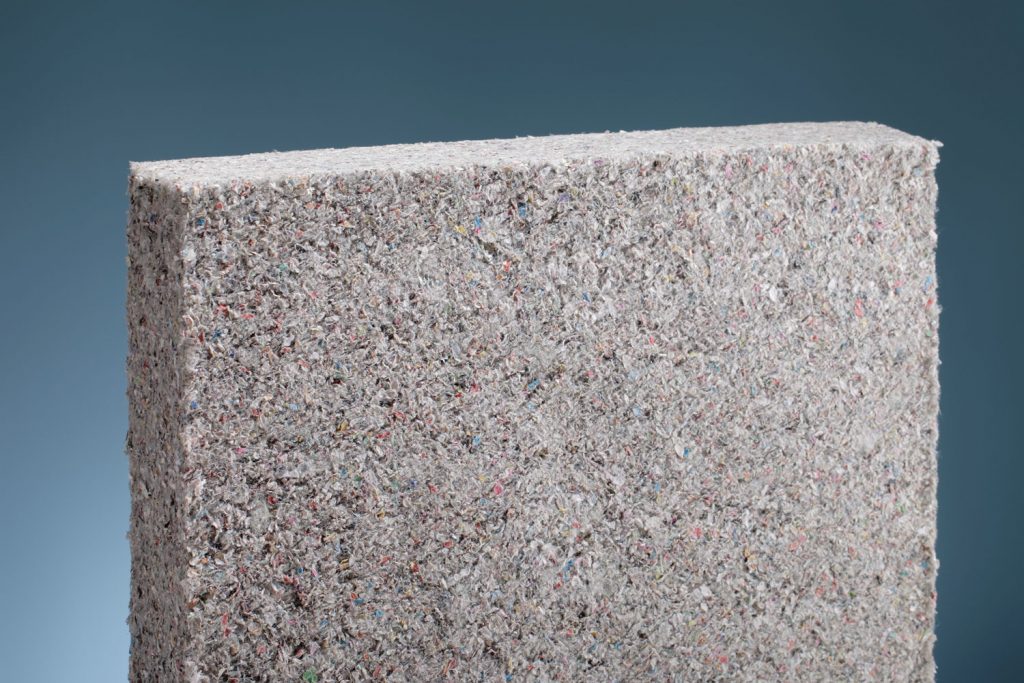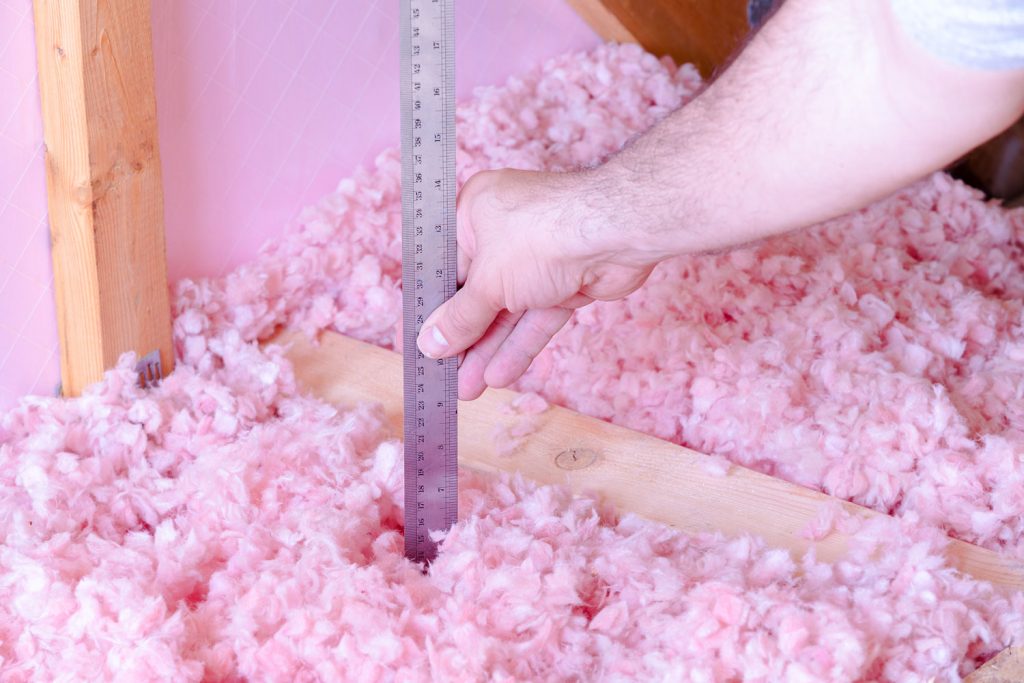Whether it's in your attic, basement, or walls, installing insulation can be a very involved home project. And if you are considering using cellulose insulation for the first time, you may be wondering if it comes in rolls like fiberglass insulation. We have researched the answer to this question, and in this post, we will go over it.
Cellulose insulation does not come in rolls at the moment. It is often referred to as loose-fill or dense-packed insulation—and it's made of mostly recycled materials such as newspaper. Its installation process involves blowing the insulation in through a motorized machine with a hose attachment.
Cellulose insulation is commonly used in attics and crawl spaces, as it is relatively easy to install in small cracks and crevices. It's also relatively inexpensive, which is another reason why it's a common choice amongst homeowners. Continue reading to learn more about this standard building insulation.

How much insulation comes in a roll?
The amount of insulation that comes in a roll depends on a few things, including the insulation brand, material, and R-value. You'll find that rolled insulation comes in rolls of 40 to 80 square feet for the most part.

What is better, blown-in insulation or rolls?
Both types of insulation have their advantages and disadvantages. The better choice for your home specifically will depend on a few factors. Ultimately, it comes down to personal preference. So let's take a look at the main factors to consider when deciding between the two.
Costs
There isn't a huge gap between the cost of cellulose and fiberglass insulation, as both cost anywhere from $0.60 to $0.80 per square foot. Another factor that you want to consider is the actual installation process itself. The batts and rolls are relatively easy to install and can be completed within a couple of hours.
The cost for a batt insulation install is about $1 to $1.50 per square foot, while a cellulose insulation install can cost anywhere between $2 and $2.50 per square foot.
You can also install cellulose insulation yourself, but you will need a specialized blower machine which you can purchase from a local hardware store. Also, installing the cellulose insulation will generally take a bit longer than rolls or batts.
Potential Health Issues
Cellulose is typically made of recycled paper materials and generally doesn't pose any health threats. Rolled insulation is typically made of fiberglass, which is a known carcinogen. Carcinogens are cancer-causing substances and they can pose health risks to homeowners. These small glass fibers which make up fiberglass insulation can become airborne during the installation process.
If they become airborne to cutting or tearing of the insulation, they can pose a serious threat to both the installers and the home occupants. This is why it's crucial to wear a ventilation mask and gloves when installing the material.
Durability
Cellulose insulation is treated with several chemicals to help prevent mildew, mold, flammability, and decay. Over time, however, the insulation can still decay prematurely, especially if it comes into contact with moisture.
Fiberglass insulation is less likely to rot or promote mildew and mold. However, it may lose some of its R-value over time as it becomes depressed. Depression can be caused by water heater leaks, burst pipes, or excessive humidity.
Ease of Installation
For the most part, rolled insulation is easier to install than cellulose insulation. With rolled insulation, you can simply cut the insulation to fit and place it in position. On the other hand, cellulose insulation will need to be installed using a motorized blower machine, and it's typically more involved.
If you are unfamiliar with the machine you may need to become educated before operating it's to ensure that you install the insulation correctly. Or, you can hire an HVAC contractor to install it for you.
The major advantage of cellulose insulation when it comes to installation is that it can easily fit into small cracks, crevices, or gaps in attics and basements. Rolled insulation, on the other hand, will need to be cut precisely to fit into small areas.
Is blown-in insulation cheaper than rolls?

Blow-in insulation isn't necessarily cheaper than insulation when it comes to material cost by square footage. However, it is more expensive typically on the installation side. This is why many people prefer to install blow-in insulation themselves. It can cost anywhere from $2 to $3 per square foot when hiring a contractor.
Can you put blown insulation over rolls?
Yes. You can install blown-in insulation over rolls. Many people do this to avoid installing thicker layers of cellulose or saving during the insulation process. This can also be a time-saver if a higher R-value is required. Before doing this, you'll want to ensure that you have the correct R-value needed for your home. You can visit your local government website to find the building requirements for insulation in your area.
While many contractors will advise you that installing cellulose insulation is best left to professionals, it doesn't mean that you can't install it yourself with the right training and equipment.

However, if you are installing blow-in insulation on your own, there are a few things to consider to ensure that the insulation is installed correctly and safely. Here are a few safety tips to keep in mind when installing cellulose insulation yourself.
Recruit an extra pair of hands
If possible, recruit another member of your household or friend to help you load the insulation into your home and place it inside the blower machine. This will save you the hassle of having to haul it all yourself, especially if you're insulating a large area. While one person is loading the blower, the other person can distribute the insulation via the hose.
Always wear protective gear
Those cellulose installation doesn't contain fiberglass, it does contain various chemical treatments that are used to prevent flammability, pests, and decay. So when installing blow-in insulation, be sure to always wear protective gear, including a dust mask, gloves, and long-sleeve clothing to prevent the insulation from getting on your skin.
Find this protective suit on Amazon.
Never stand directly on top of joists
Standing directly on a joist in your basement or attic can cause you to lose your balance, and in some cases, you may fall right through the drywall beneath the joist. Don't ever risk injury to yourself or damage to your home by doing so.
If you need it to make your way across the room, the best thing to do is to position a few pieces of plywood on the top of the joists to give you a more stable standing platform. And as you work your way across the room, you can continue to move the pieces to the new areas for support.
Box of recessed lights and electrical boxes
Before installing the insulation, be sure to box out areas for recessed lights or electrical boxes. To do this, you can use a few pieces of scrap plywood or extra drywall pieces. When installing the boxes, try to leave at least 3 inches of space between the wood and the perimeter of the light or electrical box for safety reasons.
Use battery-operated lights
Sometimes it can be hard to see into the small corners, basements, and attics during the installation process, even when there are multiple lights in the room.
If you are running into vision trouble during your installation, try installing a portable battery-operated work light in the area of the room that you're working on for the moment for better vision. You may need to purchase an extension cord or two as well.
Read more details about this work light on Amazon.
How long will cellulose insulation last?
On average, cellulose insulation can last anywhere from 15 to 30 years, depending on its location and how well it's installed. It will typically begin decorating at the 15-year mark. You may notice that it slowly appears lower and discolored. The insulation can also become thinner prematurely if it is exposed to water or excessive moisture.
Wrapping Things Up
We hope that this post has helped explain how cellulose insulation can be purchased and how it should be installed. Remember, it's always best to ensure that you are using the correct R-value insulation in accordance with your local building requirements.
Before you go, be sure to check out some of our other posts:


